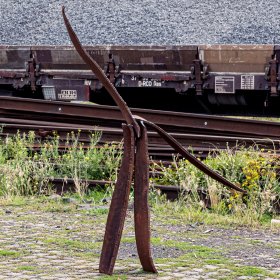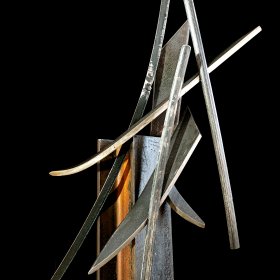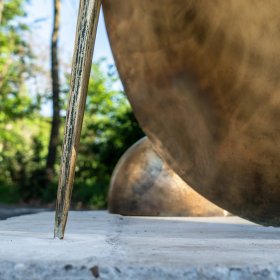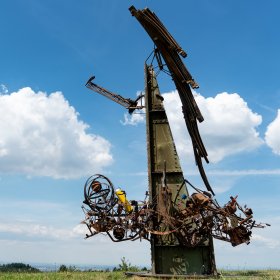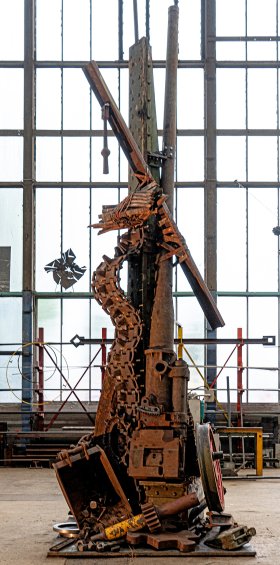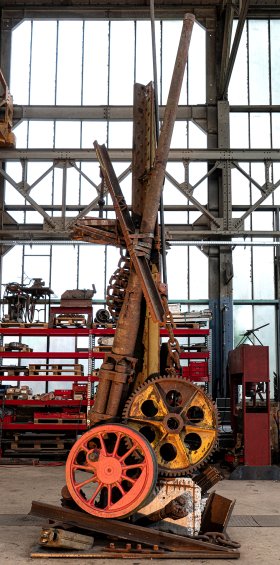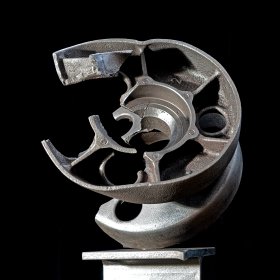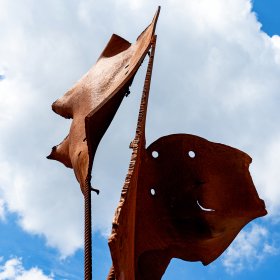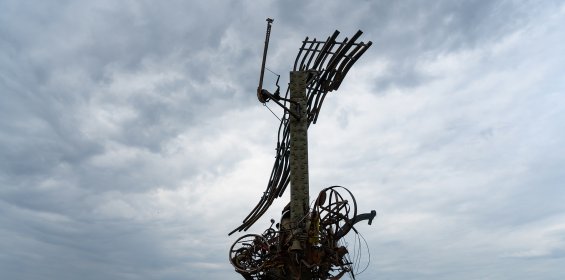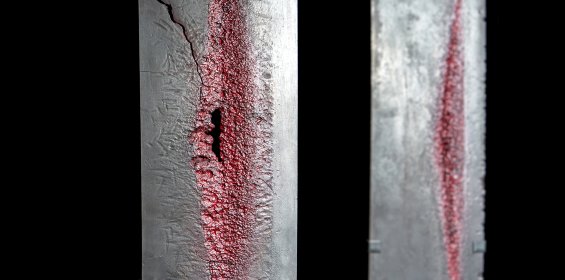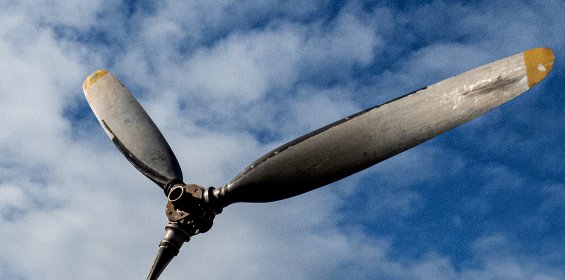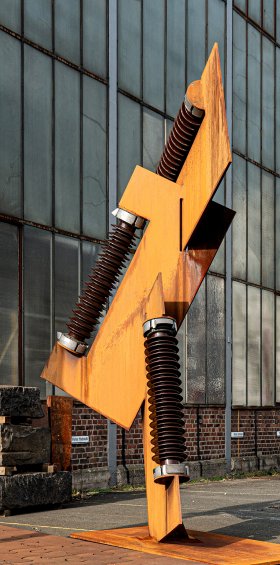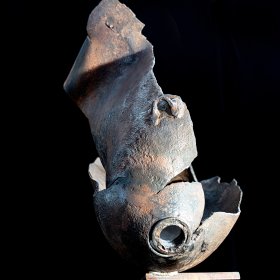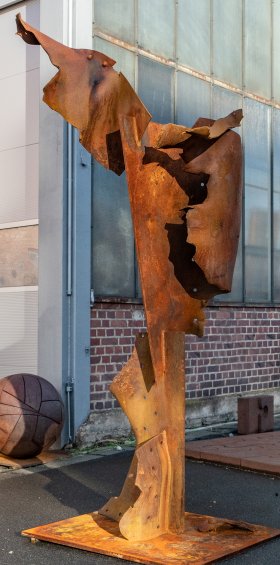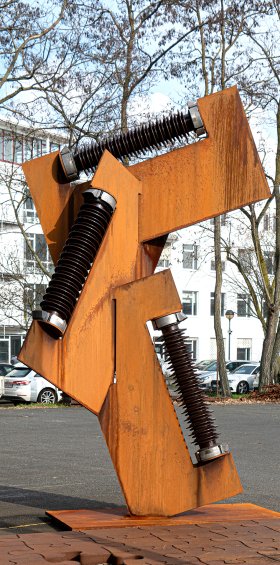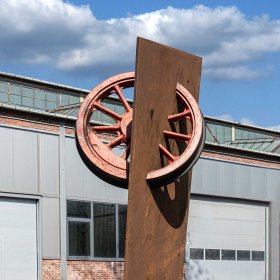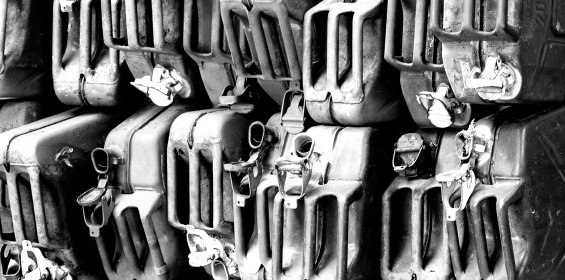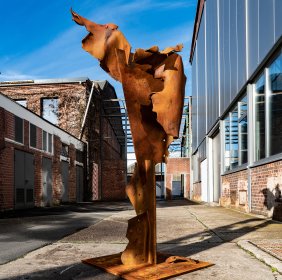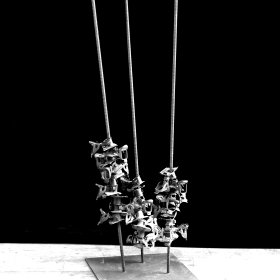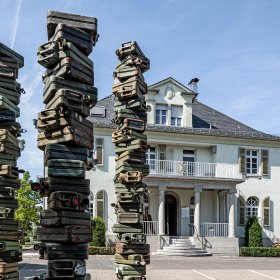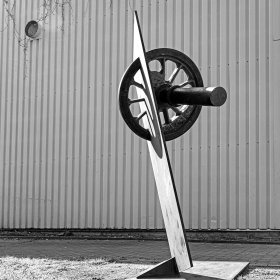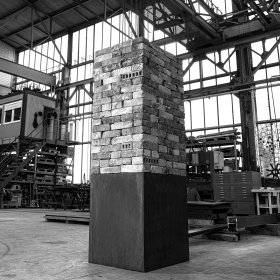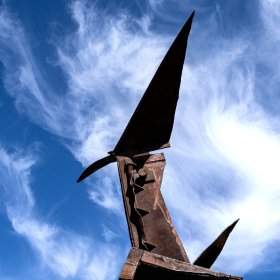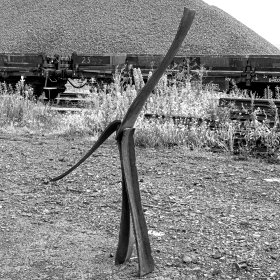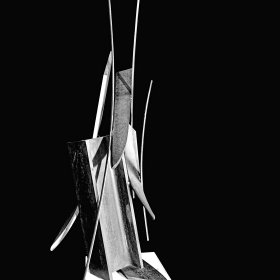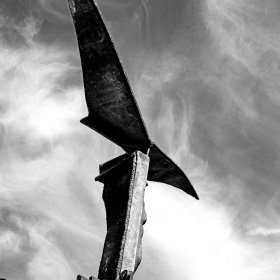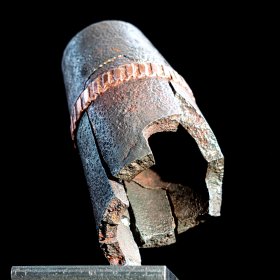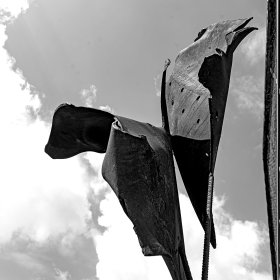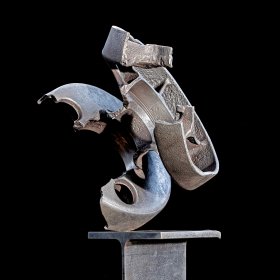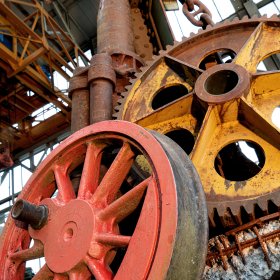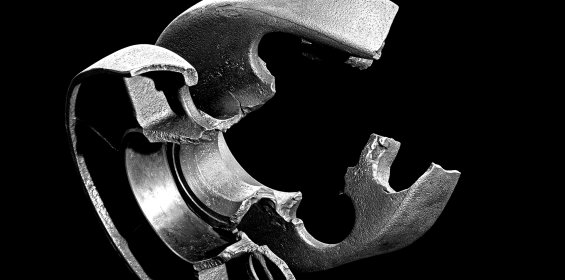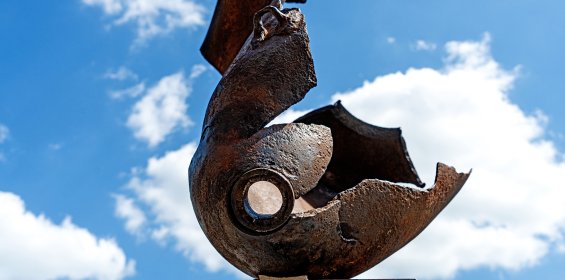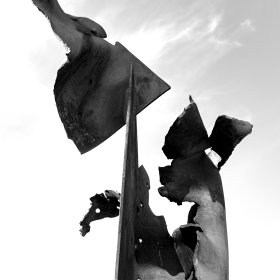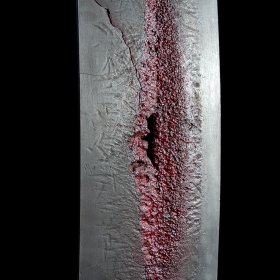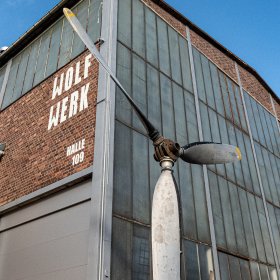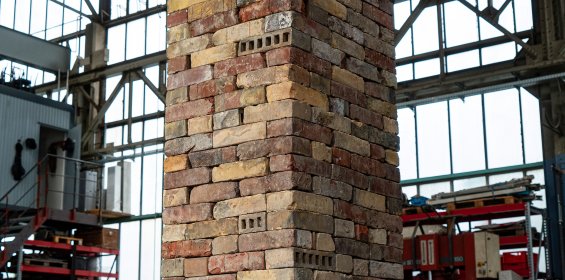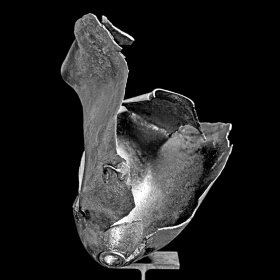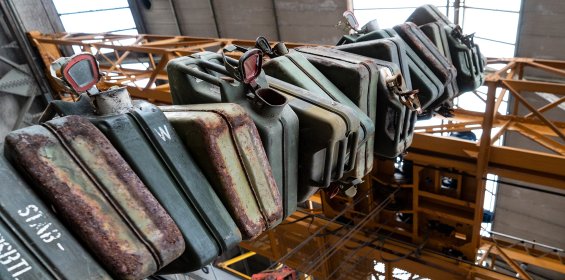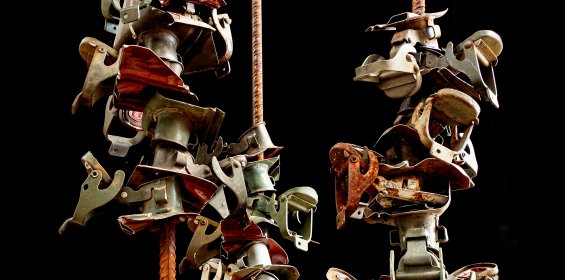The Legacy of Prometheus
Prometheus is one of the Titans in Greek mythology. His great deed was to steel fire from the gods in order to give it to humanity. To this day, Prometheus is a symbol of the progress of civilisation, of the liberation of mankind from religious or political oppression and the forces of nature. The subjugation of nature through technology principally goes back to the taming of fire. And perhaps the forging of steel is the industrial method in which this has been most impressively achieved.
The steel sculptures that Georg-Friedrich Wolf has created for his cycle of works “The Legacy of Prometheus” often look like ravaged relics of a lost civilisation. Conversely, it is also easy to identify that their elements come from obsolete industrial products. Shattered wheels, decommissioned transformers and propellers are welded to other found objects to form a sculpture that is sometimes several metres high. They are like monuments to an age of heavy industry that is either coming to an end or, in countless places, already belongs to the past. Even when long, jagged parts stick out from the sculptures’ main body, the overriding impression is that Earth’s gravity is engulfing them – or inversely, that they have been excavated from the ground.
These heroic “monuments” are fallen heroes – Prometheus was ultimately one too. Another facet of his “legacy” narrates that Zeus punished him for his theft by bounding him to a rock. “Prometheus Bound” is a motif that is frequently found in art and poetry – from the ancient tragedy by Aeschylus to various depictions in European painting and sculpture.1 But the fire-bringing Prometheus has also been honoured throughout the times, as in the Poem of Fire created in 1910 by the composer Alexander Scriabin. In the last verse of his poem Prometheus (1772-1774),
Goethe provides us with a markedly topical interpretation:
Here I sit, forming humans
In mine own image,
It will be a race like me,
For suffering, weeping,
Enjoying and rejoicing, and shall
Pay thee no attention,
Like me!
Today, in an age when digital human clones may soon no longer only belong in the world of science fiction, the “Promethean Shame” diagnosed by philosopher Günther Anders in the 1950s could afflict all mankind: a feeling of humiliation in the face of the perfection of fabricated things.2 Art, in particular, can counteract this feeling by taming technical perfection in a similar way to the taming of fire. Georg-Friedrich Wolf’s “fallen heroes” can therefore also be understood as allegories of a sinister obsession with technical perfection.
1 A database for art-historical visual material was started in 2001 under the name of Prometheus Image Archive. (https://prometheus-bildarchiv.de/en/index).
2 Cf: Günther Anders, The Outdatedness of Human Beings. On the Soul in the Era of the Second Industrial Revolution, first German edition Munich 1956, pp. 21 ff.

